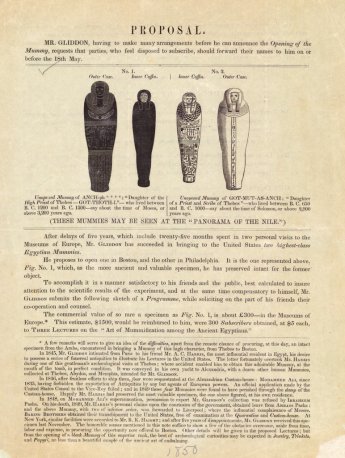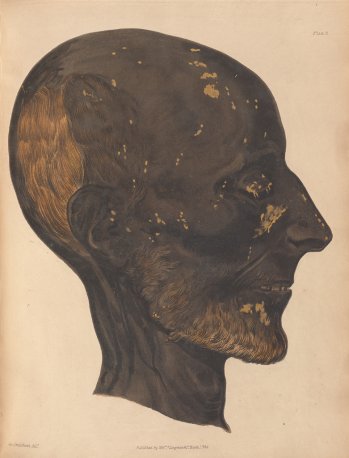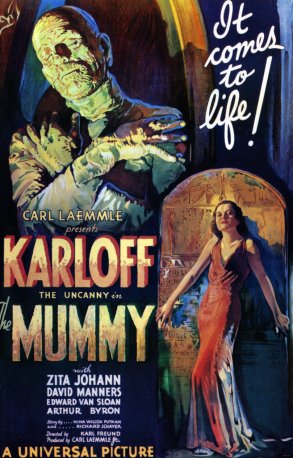Unwrapping the Past
Unwrapping the Past [ edit ]
“The mummy—there is a strange feeling of admiration and astonishment—an undefinable compound of pleasure and pain—that pervades [the] breast, on beholding this relic of by-gone ages. It seems as if a new perception were imparted to the mind—new emotions arise—and thoughts, which never filled the sensorium before, come thronging upon us. It is as if a strange key were given us by some shadowy being, and we were permitted to open one of the secret apartments of nature, that had been kept locked for centuries, and to view dark and awful, and shuddering contents.”
— Lynn Mirror, June 7, 1828 (quoted by S. J. Wolfe, Mummies in Nineteenth Century America, p. 60)
Mummification was practiced in ancient Egypt for nearly four thousand years, surviving even among the early Christian population. The treatment and wrapping of the corpse was intended to control the process of decomposition, at the same time preserving the body for eternity. In spite of many vicissitudes, numerous mummies—human and animal—have survived intact until the present day.
For the ancient Egyptians, the natural process of decomposition was not entirely negative—the fluids that came forth from the corpse of the god Osiris, ruler of the Underworld and prototype for all mummies, could be identified with the flooding waters of the Nile River. Like the architecture of their temples, even the dried corpses of the ancient Egyptians alluded to the re-creative power of the inundation. The mummy was also more than a preserved body—during the course of funerary rituals, the mummy became a receptacle for the deceased’s soul as it traveled between this world and the next. When the Predynastic Egyptians buried their dead directly in the desert, corpses dried naturally. The introduction of coffins and sarcophagi led to the need for an artificial process to preserve the body—mummification—involving removal of the internal organs and extraction of fluids using natron (a Greek term derived from the Egyptian word netjeryt), a naturally occurring sodium compound.
Human and animal mummies have been studied intensively since Napoleon’s expedition to Egypt in 1798. Public unwrappings in mid-nineteenth century Britain and America sought to answer scientific questions about the ancient remains, as well as satisfy the curiosity of paying onlookers. Mummies now yield their secrets in less invasive ways, informing Egyptologists about diseases, life span, and ancient nutrition. As one of the ultimate symbols of ancient Egypt, the mummy continues to inhabit our own culture through many media—especially motion pictures.




